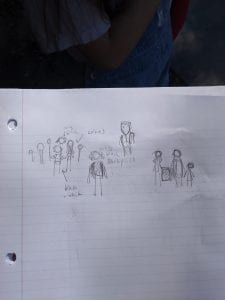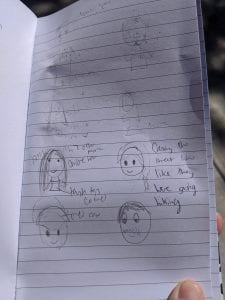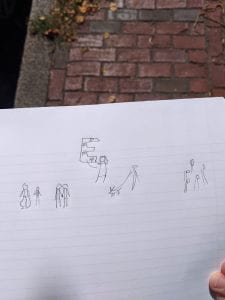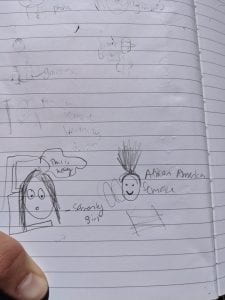Be muted. Say things you don’t mean.
Don’t worry about it though.
Be deafened. Hear things that aren’t always there.
You really shouldn’t be so hysterical.
Be blinded. See nothing you want to, and everything you don’t.
But don’t, like, panic or anything.
After reading many scores by Yoko Ono and others, I noticed a sort of poeticism to the words and phrases used, as well as the concepts themselves. For instance, the quiet romanticism of Yoko Ono’s Tape Piece III resonated quite strongly with me. I ended up approaching the writing of my score more like a freeform poem than a game or a performance like many people, probably because I am more comfortable in the realm of poetry than I am in performance art. I ended up being very focused on the flow of the language and the look of the words on the page, perhaps overly so. In the process of designing my score, I ended up making several drafts with slight variations and comparing them to each other in terms of visual clarity and meaningfulness.
The message of my score evolved as I wrote it. My first intentions were to portray some kind of anxiety-ridden way of life, which is what the majority of people I showed it to read into it as well. As I rote, though, I was reminded or the old saying “see no evil, hear no evil, speak no evil,” and how that kind of behavior can often lead to evil taking power in a society. While I did enjoy the double meaning of my original score, I knew that, at least for my own purposes, I would have to choose one to lean into, mostly because of the how unrelated the two subjects were. Another, more tempting, solution would be to shift one or the other in some direction to relate them more closely to each other, either by drawing a parallel or juxtaposing something about them. After a lot of deliberation, I decided that taking the more personal angle would be much more impactful.
The path I chose was somewhat paradoxical: the instructions are at once demanding and condescending. The player is told to do things that remove control of their own lives from their hands, and then in the next breath they have their concerns dismissed as “worrying” and “hysteria.” This is meant to evoke the feeling of struggling with a total loss of control as someone with the responsibility, or at least the ability, to help fails to do so. The condescension toes the line of gaslighting at points, casually brushing off any reasons to panic or even worry, completely juxtaposed with the opposite lines’ instructions to give up all trust in your senses.




